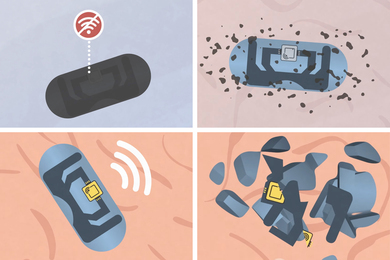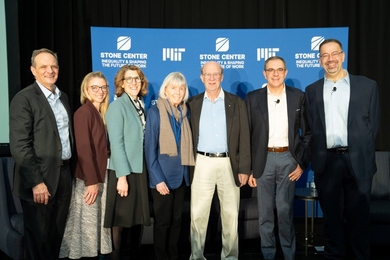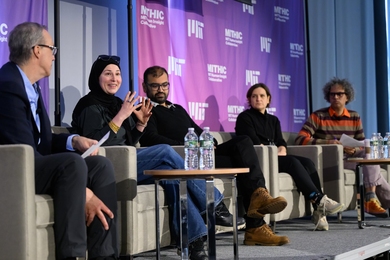The next generation of television will feature crisp, clear pictures without "snow" and with CD-quality sound and the ability for viewers to access data such as newspaper stories related to a given program. These are just a few of the advantages of digital TV over the current technology.
And it's coming to you, thanks in part to MIT researchers who were part of the group that designed the new system. Now the group, composed of researchers from MIT and six companies, has received a 1998 R&D 100 Award for the system (the award joins the Emmy they received in 1997).
Digital TV, which includes high-definition television (HDTV), will be available in major metropolitan areas including Boston this fall. By 2006, the new system is expected to replace the current National Television System Committee (NTSC) system in the US.It is "the most significant change in television in 50 years," say its developers, who come from MIT, Sarnoff Corp., General Instrument, Lucent Technologies, Philips Laboratories, Thomson Consumer Electronics, and Zenith Electronics Corp.
MIT researchers led by Professor Jae S. Lim, who heads the Advanced Television and Signal Processing group in the Research Laboratory of Electronics, contributed major technical elements to the new system. "The technology is important, but it's only part of the story," said Professor Lim, also of the Department of Electrical Engineering and Computer Science.
He went on to describe the process involved in selecting the technical components that served as the basis for the United States' digital TV standard. Originally the FCC chose four finalists from among the organizations that had submitted proposals for the standard. The four finalists were General Instrument, and teams from Zenith and AT&T; Philips, Thomson, and Sarnoff; and MIT and General Instrument (the firm was involved in two of the designs).
The FCC then gave the finalists a choice: the agency could either re-evaluate each of the four systems, or all of the organizations involved could get together to submit one single system. "We chose the latter," Professor Lim said, and the Grand Alliance was formed.
The resulting standard, therefore, is based on the "participation of hundreds of people from a variety of backgrounds," Professor Lim said. "As a consequence there was considerable debate on which technologies should be used, etc." In the end, he said he was impressed with the result, given the number of people and opinions involved.
So "MIT had had an impact not only in terms of technical contributions, but also in the decision-making process for the United States' digital TV standard," Professor Lim concluded.
Another benefit for the Institute: "I have a lot of stories to tell my students for many years to come."
Currently HDTV sets are expensive, costing more than $5,000. However, the digital TV team noted that "when color TV was first introduced, a set cost the same as a full-sized Chevrolet sedan. By comparison, HDTV starts at a much lower relative price." Furthermore, "the history of consumer electronics shows that these prices can be expected to drop fairly steeply as volume increases."
The team also notes a less expensive alternative: a set-top box costing about $200 that will convert the digital signals for display on existing TV sets. (Picture size and resolution, however, will be limited.)
A version of this article appeared in MIT Tech Talk on September 16, 1998.







